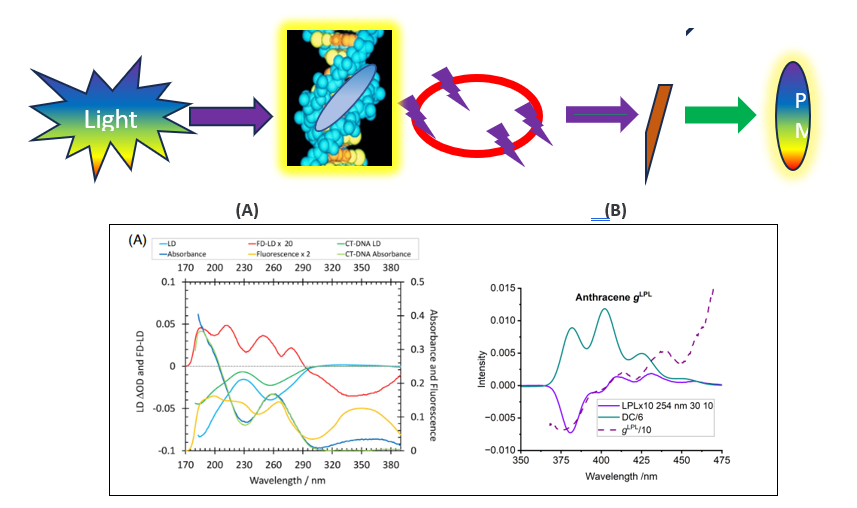Development and application of polarised light spectroscopies to study the structure and function of biomacromolecules, lipidic environments and the matrices of bioactive compounds
This project develops or applies advanced spectroscopy techniques to study biomacromolecules, focusing on membrane proteins and bioactive matrices. Students will work with unique instruments for vibrational dichroism and polarised luminescence.
Groups
Project status
Content navigation
About
Scientific advances invariably depend on the quality and diversity of available techniques and instrumentation and on our ability to understand the data that are produced. A wide range of projects are available to develop new spectroscopy techniques or to apply existing techniques to understand more about the structure and function of biomacromolecules. Projects will be designed to fit a student’s interest but it is anticipated they will involve application to membrane protein systems and/or the matrices of bioactive products. Projects will include work on instruments unique in the world for measuring vibrational circular or linear dichroism and a new instrument for circularly and linearly polarised luminescence.

Schematic of a polarised light fluorimeter. (A) The linear dichroism (LD) signal from flow oriented DAPI-DNA dominated by DNA features, whereas the fluorescence detected-LD is rich in spectral information on the fluorophore. (B) Linearly polarised luminescence, fluorescence and dissymmetry factor of anthracene on stretched polyethylene.
